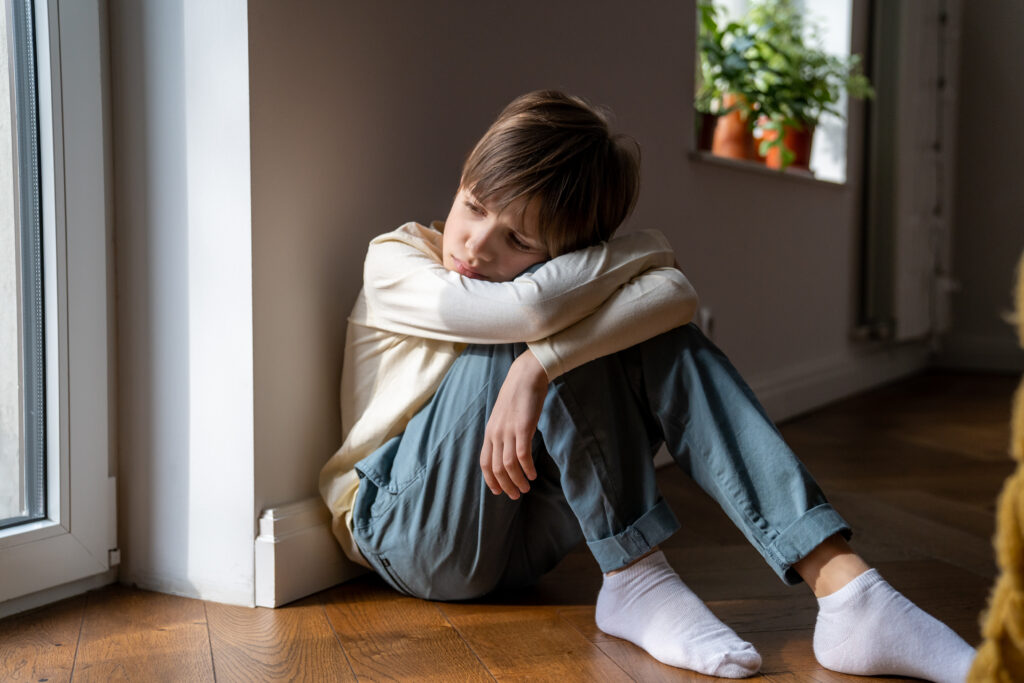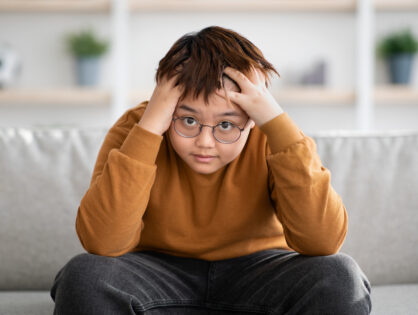Anxiety in children and adolescents is a growing concern that requires attention and understanding. As the pressures of modern life continue to increase, so does the prevalence of anxiety disorders among young people. The transition from childhood to adolescence involves significant physical, emotional, and social changes, making this age group particularly vulnerable to anxiety. Recognizing the signs of anxiety early is critical, as it can interfere with a child’s academic performance, social interactions, and overall quality of life. Addressing anxiety effectively not only helps alleviate immediate distress but also sets the foundation for healthier coping mechanisms and mental health resilience in adulthood.
Children and adolescents often experience anxiety differently than adults, making it challenging for parents, caregivers, and educators to identify and address. While some young people may openly express their worries and fears, others might exhibit more subtle signs, such as physical symptoms or changes in behavior. Understanding these differences is key to providing the right support and interventions.
Moreover, the stigma surrounding mental health can prevent young people from seeking help or expressing their feelings. Creating an environment where anxiety is recognized as a common and manageable condition is essential for encouraging open dialogue and early intervention. This approach not only normalizes mental health discussions but also empowers children and adolescents to take charge of their well-being.
Recognizing Anxiety in Children and Adolescents
Recognizing anxiety in children and adolescents is the first crucial step in addressing and managing it effectively. Unlike adults, young people may not have the vocabulary or self-awareness to express their anxiety clearly, so it often manifests in different, less direct ways. By understanding these signs, parents, caregivers, and educators can intervene early and provide the necessary support.
Physical Symptoms
Children and adolescents with anxiety often experience a range of physical symptoms, which can sometimes be mistaken for medical issues:
Frequent Complaints of Stomachaches or Headaches: Anxiety often causes physical discomfort. Children might frequently complain of stomachaches or headaches without a clear medical cause. These symptoms can be the body's response to stress and worry.
Excessive Sweating, Trembling, or Shaking: When faced with anxiety-inducing situations, children may exhibit physical signs such as sweating, trembling, or shaking. These symptoms are the result of the body's fight-or-flight response.
Sleep Disturbances: Anxiety can significantly impact sleep. Children might have difficulty falling asleep, experience frequent awakenings, or suffer from nightmares. Sleep deprivation can further exacerbate anxiety, creating a vicious cycle.
Emotional and Behavioral Symptoms
Emotional and behavioral changes are often the most noticeable signs of anxiety in young people:
Constant Worry or Fear: Children with anxiety may constantly worry about everyday activities or future events. They might express fears that seem irrational or disproportionate to the situation.
Avoidance Behavior: To cope with anxiety, children might avoid situations, activities, or places that trigger their anxiety. For example, a child might avoid school due to fear of separation from their parents or fear of social interactions.
Clinginess: Younger children, in particular, may become unusually clingy, refusing to be separated from their parents or caregivers. This behavior is a way of seeking reassurance and safety.
Irritability or Anger: Anxiety can lead to increased irritability or anger. Children might have frequent outbursts or appear more frustrated than usual, as they struggle to manage their overwhelming feelings.
Difficulty Concentrating: Anxiety can interfere with a child’s ability to focus on tasks or schoolwork. They might appear distracted, struggle with their school performance, or have trouble completing assignments.
Social Symptoms
Anxiety often affects a child's social life, impacting their interactions with peers and their willingness to participate in activities:
Withdrawal from Friends and Activities: Children and adolescents with anxiety might withdraw from social interactions. They may no longer participate in activities they once enjoyed, preferring to stay at home or isolate themselves.
Reluctance to Go to School: School-related anxiety is common. Children might complain about going to school, make frequent visits to the nurse’s office, or show signs of distress when it’s time to leave for school.
Fear of Social Situations: Social anxiety can manifest as excessive shyness or fear of being judged by others. Children might avoid group activities, struggle to make friends, or fear speaking in front of the class.

Addressing Anxiety in Children and Adolescents
Addressing anxiety in children and adolescents involves a multifaceted approach that includes emotional support, practical strategies, and professional intervention when necessary. By understanding and implementing these methods, parents, caregivers, and educators can help young people manage their anxiety effectively and build resilience.
Open Communication and Emotional Support
Creating an environment where children feel safe to express their emotions is the cornerstone of addressing anxiety:
Encouraging Open Dialogue: It's important to encourage children to talk about their feelings. Ask open-ended questions and listen actively without judgment. Show empathy and validate their emotions by acknowledging their fears and worries as real and significant.
Providing Reassurance: Offer consistent reassurance that their feelings are normal and that they are not alone. Let them know that anxiety is a common experience and that there are ways to manage it effectively.
Teaching Emotional Regulation: Help children develop skills to regulate their emotions. Techniques such as deep breathing, mindfulness, and meditation can be effective in calming anxiety. Practice these techniques together to reinforce their benefits.
Creating a Structured and Supportive Environment
A structured environment can provide a sense of security and predictability, which can help alleviate anxiety:
Maintaining a Routine: Establishing and maintaining a daily routine can provide a sense of stability. Consistent meal times, homework times, and bedtimes help children know what to expect, reducing anxiety about the unknown.
Setting Realistic Expectations: Set achievable goals and expectations. Avoid placing excessive pressure on children to perform academically or socially. Encourage effort and progress rather than perfection.
Creating a Calm Environment: Minimize sources of stress in the home environment. This includes reducing exposure to stressful news, managing conflicts calmly, and providing a quiet space for relaxation and study.
Practical Strategies for Coping
Teaching practical coping strategies can empower children and adolescents to manage their anxiety:
Problem-Solving Skills: Help children develop problem-solving skills by breaking down larger tasks into manageable steps. Teach them to approach challenges methodically rather than feeling overwhelmed.
Positive Self-Talk: Encourage positive self-talk to combat negative thoughts. Help children identify negative thoughts and replace them with more constructive, reassuring ones.
Gradual Exposure: For children who avoid anxiety-inducing situations, gradual exposure can be an effective technique. Start with less threatening situations and gradually increase exposure as their confidence builds.
Professional Support and Therapy
When anxiety significantly impacts a child's daily life, professional support can be crucial:
Therapy Options: Cognitive Behavioral Therapy (CBT) is particularly effective for treating anxiety in children and adolescents. CBT helps children understand and change thought patterns that contribute to anxiety.
School-Based Support: Many schools offer counseling services and support programs. Collaborate with school counselors and teachers to ensure a comprehensive support system is in place.
Medication: In some cases, medication may be recommended by a healthcare professional. Medications can help manage severe symptoms, allowing therapy and other interventions to be more effective.
Building Resilience and Long-Term Coping Skills
Long-term resilience can be built through ongoing support and skill development:
Encouraging Independence: Foster independence by allowing children to make choices and take on responsibilities appropriate for their age. This helps build confidence and reduces anxiety about their capabilities.
Physical Activity: Regular physical activity is a natural way to reduce anxiety. Encourage participation in sports, dance, or other physical activities that the child enjoys.
Social Skills Development: Social skills training can help children feel more comfortable in social situations. Role-playing and group activities can be useful in building these skills.
Parental and Caregiver Involvement
Parents and caregivers play a vital role in managing anxiety:
Modeling Healthy Behavior: Children often emulate their parents' behavior. Model healthy coping mechanisms and stress management strategies in your own life.
Educating Yourself: Learn about anxiety and effective interventions. Understanding the condition can help you provide better support and advocate for your child's needs.
Seeking Support for Yourself: Caring for a child with anxiety can be challenging. Ensure you have a support system and consider seeking guidance from professionals to manage your own stress.
Conclusion
In conclusion, addressing anxiety in children and adolescents is a multifaceted process that requires a collaborative effort from parents, caregivers, educators, and healthcare providers. By recognizing the signs of anxiety early and providing appropriate support, we can help young people develop the skills and resilience needed to manage their anxiety effectively. Creating a supportive environment, teaching coping strategies, seeking professional help when necessary, and promoting healthy lifestyle habits are all essential components of addressing anxiety in this population.
It's crucial to remember that anxiety is a common and treatable condition, and with the right support and interventions, children and adolescents can learn to navigate their anxiety and lead fulfilling lives. By fostering open communication, offering reassurance, and validating their feelings, we can create a safe space for young people to express themselves and seek help when needed.
Additionally, promoting mental health awareness and reducing the stigma surrounding anxiety is essential for encouraging early intervention and ensuring that young people receive the support they need. By working together to address anxiety in children and adolescents, we can help them build the resilience and coping skills necessary to thrive in today's complex world.
Related Articles:
Anxiety and Sleep: Tips for Better Rest and Relaxation
How to Support a Loved One Struggling with Anxiety
Coping with Anxiety During Major Life Transitions
The Impact of Social Media on Anxiety Levels
The Role of Cognitive Behavioral Therapy (CBT) in Treating Anxiety



